Check it, Dear Reader,
The good folks at Rockstar were kind enough to hook us up with a copy of “L.A. Noire,” a game I personally have been very interested in for some time. To return their kindness, I decided to devote this entire week to playing the game, so that I could make a really authoritative statement on the experience.
Now you already know I don’t really write “reviews.” It’s great for other people, but personally I just don’t affix stars, or numbers, or any combination of fingers pointed in any direction to a piece of entertainment. So if you came here looking for that, you’d best turn around now. What I will provide is a thoughtful, thorough discourse on the content of the game. I plan to do this in several parts, of which this is the first. Hit the jump and let’s get moving.
(FYI: This article will be discussing the Xbox 360 version)
Presentation. Stunning. The opening menu is one of my favorites in years. I don’t even want to tell you, just look at it for yourself.
Graphics. Boy do I feel two ways on this one. On one hand, there’s a fair amount of clipping, a little pop-in, and a sort of workmanlike level of detail across the board. On the other, the lighting effects are great, art direction is beautiful, and the facial performances (that’s really what you have to call them) are stunning. My sense is, “L.A. Noire” tightened its belt on the basics to try and push for something grand in one specific area. In fact, that’s true of the game in general.
Driving. Not bad, but certainly not my favorite. The cars in this game all kind of lead with their noses, and the first time you get behind the wheel you have to adjust to how they move. It becomes fairly invisible soon enough, and honestly it makes things easier than they should be, so I guess I don’t mind it. Still, “Noire” is not a driving experience. Most of the cars sag on the accelerator and feel heavy. I guess that’s period detail, but still.
Of course, the GPS is now gone, but Team Bondi found a clever solution: the X button asks your partner for directions. It only goes one turn at a time, but there are moments when your passenger is amazingly descriptive, so kudos to the team for that.
Fighting. Just kind of odd, honestly. For one thing, you have to hold down Left Trigger to fight. This strikes me as very strange, because fistfights only occur in incredibly canned, pre-set scenarios, and it’s not like you’d ever not want to be fighting in those. If Left Trigger isn’t depressed, you’ll still stand there with your mitts up, but Cole Phelps (the guy you play as) will stubbornly refuse to throw a punch. The Left Trigger must be some kind of emotional primer pump for Cole; maybe it activates his “Eye of the Tiger.”
From there, you basically trade between dodging the occasional blow and landing as many as you can until the fight is over. It feels like an afterthought, and it’s treated like an afterthought.
Shooting. Fares better than fist-fighting, and is definitely more prevalent, but I have issues here too. First off, the cover button (Right Bumper) is sticky as hell; you can get into cover without a problem, but busting out of it is often a chore. Furthermore, Cole’s default speed is somewhere between “waddle” and “saunter.” To make him move his hard-boiled behind, you have to engage the Right Trigger. This means that coming out of cover and running to the next cover is a three input operation: control stick, Right Bumper, Right Trigger. That’s just too much.
Also, Auto-Aim is heavy in this thing, especially when you pop out of cover. It’s so intense that it occasionally robs me of a sense of accomplishment. And when Cole isn’t auto-aiming, the sights move incredibly slowly and it’s a pain to get where you’re going.
Okay, but those objections aside, actually the gunfights here are fun and they go a long way towards mixing up the rote procedural elements. The smashing conclusion of “Fallen Idol,” staged on an over-sized movie set with a dragoon of mob enforcers bearing down on you, is a particularly great action set-piece. I was hooting and hollering out loud by the time it was done. Great stuff.
Sleuthing. Ah. So now we come to meat of the experience. Anyone who has played “Noire” will probably tell you it does not quack or walk like GTA. This is much more in the “Heavy Rain” family, with a GTA city structure superimposed on top of it. Honestly, I can’t help but wonder if “Noire” wasn’t originally built much more like a Quantic Dream title, before Rockstar stepped in and laid their open-world framework over it, not unlike Epic’s machismo visual style on “Bulletstorm.”
The sleuthing here is incredibly ambitious: Bondi actually wants to make you a detective, using real inference skills to solve crimes. They succeed to a startling amount, certainly more than anyone else has, but still not completely. What they get right is maybe the hardest part: the facial performances. The in-game tutorial boldly demands that you just figure out if you think someone’s lying, by watching how they act. I scoffed at this, but it actually holds up. Eight or nine times out of ten, I would simply listen to the character as if they were a real person, decide if I believed them, and get the question right. Conveniently, the game immediately informs you if you’ve incorrectly diagnosed a particular statement, but the case keeps plowing ahead regardless.
Of course, you quickly realize there are a few simple visual cues being used to denote lying, but surprisingly the effect (and the challenge) doesn’t go away. Even if you know something is shady with a particular statement, you still have to produce the correct piece of evidence to accuse someone of outright BS. Matching a lie to the right evidence runs the gamut from simple, to ingenious, to occasionally confusing: why doesn’t X prove that this guy is lying, or how come Y does? There’s also the “Doubt” option, which I tend to rely on, but it’s no game-breaker: if someone tell you a flat-out fib and you don’t man up to a full accusation, the insidious truth will slip right by you.
All of this is bolstered by a rudimentary leveling system that gives you “Intuition Points.” These handy little tools will reveal the location of all relevant clues, or eliminate wrong answers to questions one at a time. It’s a perfect supplement, and it functions smoothly within the game.
The cases themselves are well-built, and for the most part vary nicely. The best ones are the long ones, especially where they mix several play modes in at once. “Fallen Idol,” an early traffic case, is currently my favorite: it blends some truly grueling question sessions with sweat-inducing sneaking, and a slam-bang action finish. Not every case is that satisfying, but most work well and feel good to solve.
Also, Team Bondi did a great job layering a variety of outcomes into each scenario. At one point, I thought I’d knocked a case out of the park, only to have the wrap-up tell me that if I had driven a little faster, I would have seen a completely different scenario on arrival. These kinds of unpredictable variables keep you on your toes throughout the game: you never know what will matter and what won’t.
Clue-finding is the weakest branch of the tree, it’s just an Easter Egg hunt. You walk through every space they hand you, waiting for an object you can interact with. You can switch off an audio/rumble “gimme” system that tells you where everything relevant is going to be, and I definitely recommend doing so. But once you do, this section is more about patience than intuition.
Game Structure. Here I have a serious problem. The game is structured as a series of episodes: you move irrevocably from one to the next. Unlike “Red Dead Redemption,” GTA or any other franchise with an open world, you never truly feel set free in that environment. Team Bondi’s hand is constantly present, forcing you along, barely giving you time to wander around, set up your own apartment, collect cars, or do any of the fun things we love to do in sandbox games.
Performance. This deserves it’s own category: the voice acting and motion capture in “L.A. Noire” is the best in any game, period. I’m constantly stunned at how nuanced and accurate Team Bondi managed to be in their reconstruction of how people talk and behave. Aaron Staton is terrific as Cole Phelps, and all of the witnesses/suspects/POIs give startlingly real performances.
Take one example: recanting a lie accusation. When you step too far and accuse someone of lying, but can’t prove it, the game forces Cole to apologize. Watching Staton convey this complex cauldron of feelings is stunning. You can register that he’s embarrassed, but also that he doesn’t want to lose face, and the conflict between the two is incredibly real. “Sorry,” Phelps mumbles, “Just doing my job.” Wow.
Wrap Up. Overall, my impression of “L.A. Noire” is that it’s a good game, albeit a flawed one. What Team Bondi achieves with facial performance and its unique “truth or not” game-play is forward-thinking, but at the same time, some of the other meat-and-potatoes fundamentals of game design fall by the wayside. I admire what they’ve done here, but “L.A. Noire” is a slightly messy evolution.
-AA
bring me some water, and put it in the skull

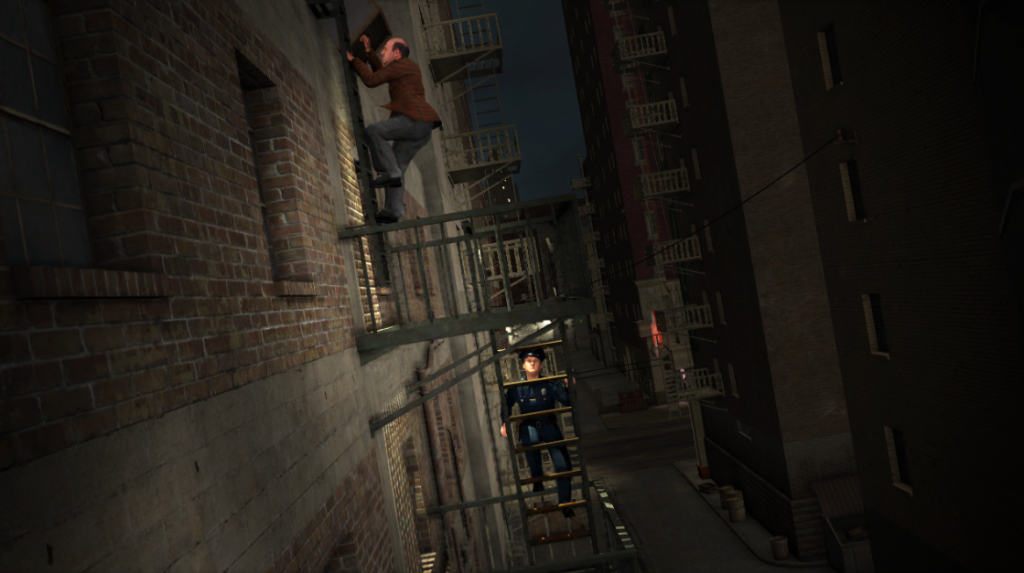

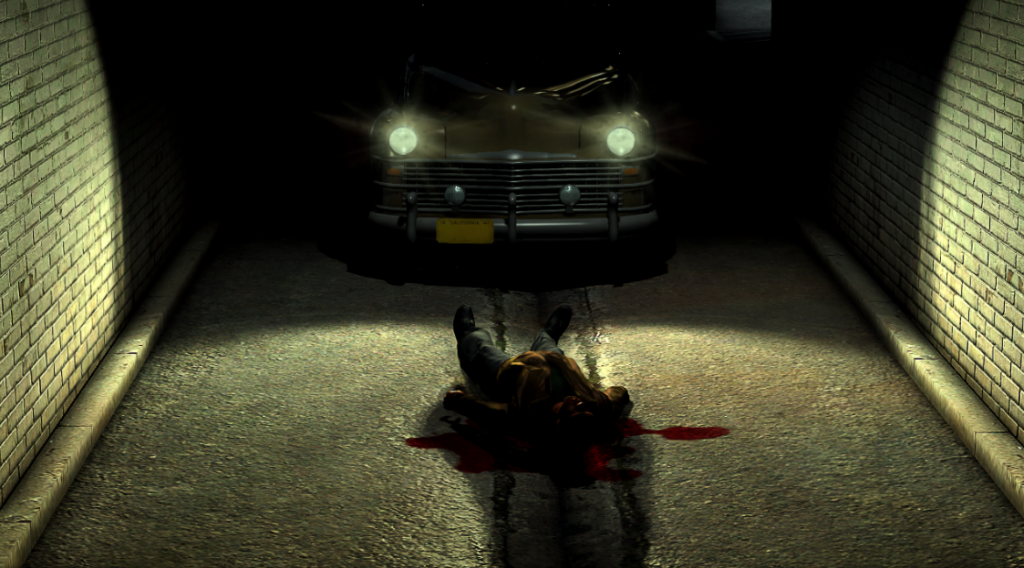
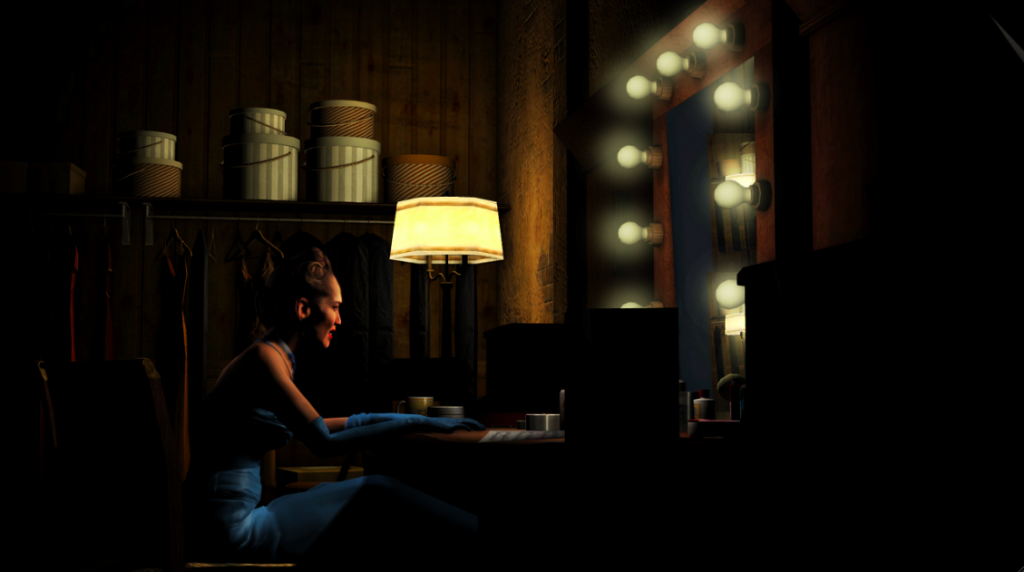
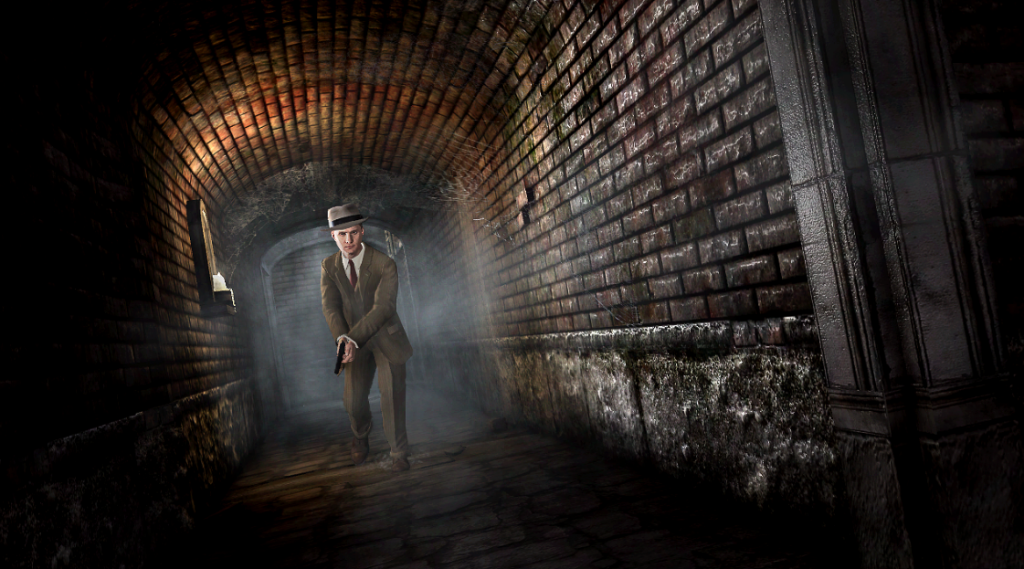
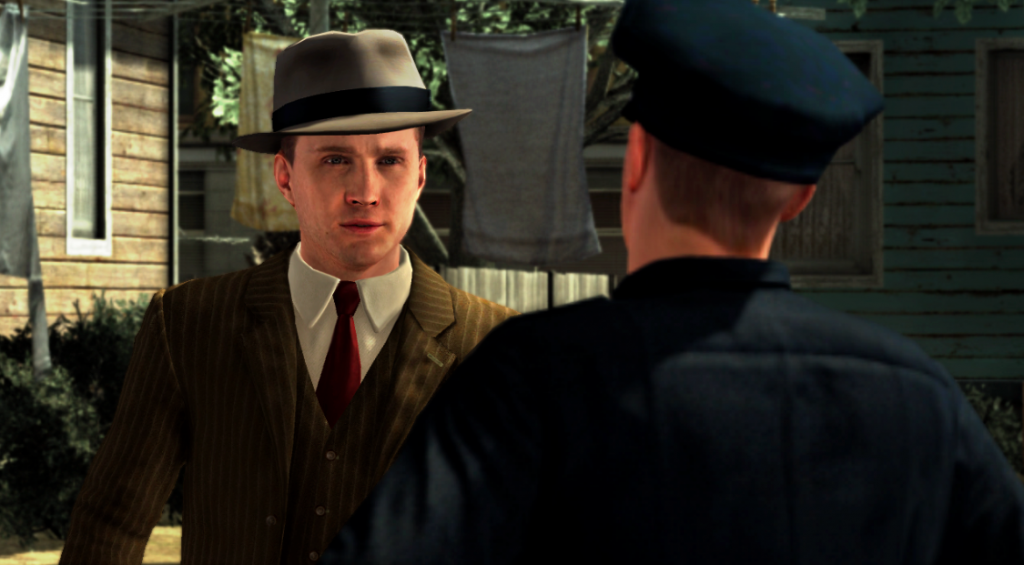
6 Comments
Yay, silly cover mechanics! One button plus direction to running slide, lean or duck into cover, aim button plus direction if applicable for shooting around/over the cover while being temporarily vulnerable, release aim button to go back into cover, use same button you went into cover with to get out of it. That’s simple and effective and doesn’t need changing as it gets to feel natural once you’ve done it a few times. What kind of clueless jackasses do they get to test these games?
Regardless, is it worth playing despite the pains in the ass?
I’m thinking about reactivating my Gamefly account now and would love to play something that forces me to do a little critical thinking, if this game offers such.
Ohhhhh it does. Offers lots of critical thinking.
If you like story-driven games, then definitely.
I agree with all the faults, defintely. I’m only 3 or so hours along but I’m really into it, problems and all.
I’ve been trying to figure out the execution behind the face mechanics and I think i finally understand it. Most of you probably don’t give a shit. To me it’s seriously the finest orecestra of sequenced normal mapping and subtle animated geometry this side of the mason dixon.
I agree. It’s phenomenal. And it really makes the game.
I agree -the acting is excellent, but the popping through the background objects irks me more than the other faults because I have a degree in 3D animation and I expected a higher level of attention to detail. I’m also not a fan of spending most of my time trying to keep those clunky cars on the road -turning around is such a huge pain! The gun fights are decent (I’m only 3 hours into the game), and the chasing scenes are fun, but long -it takes you really far back to start over if you fail and that’s been frustrating. Also, it doesn’t always move on when you incorrectly guess if the POI is lying or not -sometimes your Captain makes you start all over and you have to sit through the long-ass monologues all over again. The game so far just seems long. I’m still on the fence because I’m not far enough into it, but there were a few times I almost quit because the flaws where just to infuriating.
I just beat Heavy Rain a few days ago, and I was so impressed -I really hoped the gameplay in LA Noire would be similar. I like the option of walking AND running, but the fight scenes in Noire are a joke -I just keep punching until they go down. No challenge what so ever -I don’t even need to block. In Heavy Rain I felt constantly challenged and never felt a lull in the story…..I’m hoping when I play a little more today that LA Noire will push forward a little faster.